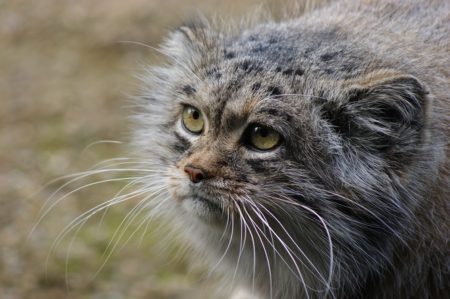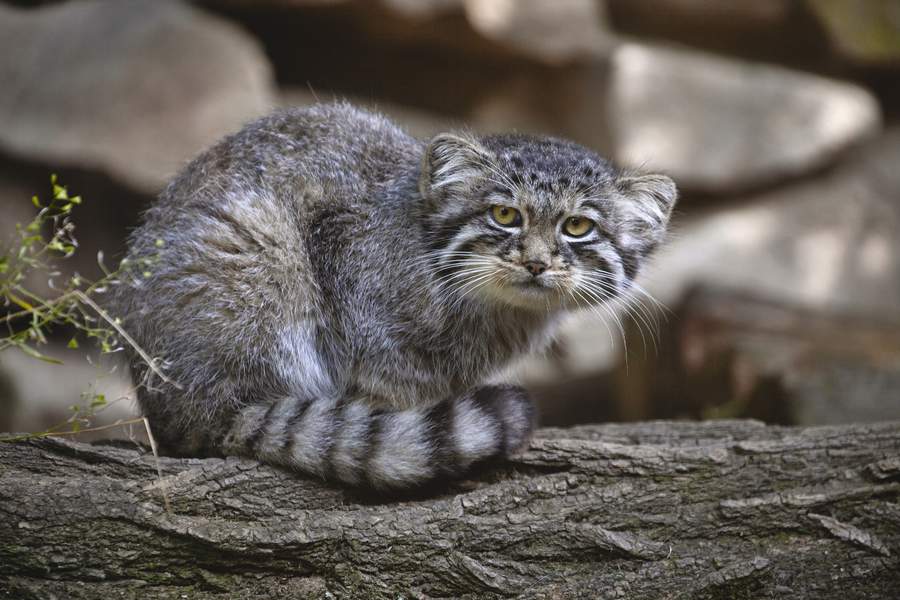Meet the world’s grumpiest wildcat
Noisy, reclusive, antisocial and with a face that almost always looks cross, the Pallas’ cat (or manul) is a strong contender for grumpiest felid
Often overshadowed by the striking snow leopard, Pallas’ cats also inhabit the mountains of Asia, as well as grasslands and shrublands. Most members of the species live in Mongolia and China, but their range also reaches into Iran, Russia and the Himalayas. Yet despite this, there aren’t many sightings of these elusive cats because they live at high altitudes and they spend their time in dens when they don’t need to be out on the surface.
This cat, named after a German naturalist, hasn’t changed much since it became one of the first modern cats to evolve around 12 million years ago. Living at heights of over 4,600 metres (15,091 feet), it’s well-adapted for the cold, with thick, silvery fur and a stocky build. It prefers habitat with lots of hiding places, as it’s not a great runner.
Known for its characteristically expressive face, the Pallas’ cat has plenty of reasons to be as grumpy as it looks: as well as living alone in the cold, it’s mistaken for being fat and its own scientific name is an insult. Add to this an extremely high mortality rate and the fact that it’s classed as Near Threatened, and it’s the perfect recipe for a real grumpy cat.
Name-calling
The Pallas’ cat originally had the Latin name Felis manul, but it was later changed to Octobulus manul. This new name means ‘ugly-eared’, referring to the cat’s small, wide-set ears. But whatever anyone thinks about their appearance, they are perfectly suited to the Pallas’ cat’s life on the grasslands and rocky steppes.
These cats hunt by creeping up on their prey and hiding before they pounce; flattened faces and small ears low on their heads mean they can
peek over the top of their hiding place without being spotted. Pallas’ cats are slow, with their stocky legs not built for speed, so hiding and pouncing are the most efficient tactics for finding food. This sneaky ability also helps them to hide from predators like foxes and eagles.

All fluff
Pallas’ cats have attracted some attention because of how fat and fluffy they look. In truth, they’re about the same size and weight as a house cat – the appearance of any extra size is entirely down to their fur. To cope with the extreme cold, the Pallas’ cat’s coat is the thickest and longest of any cat. It changes from stripy red-brown in summer to a more uniform grey in winter and becomes even thicker.
The fur on its sides and tummy is twice as long as the fur on its back, possibly to protect it from the icy ground when it’s lying low. Despite its warm coat, the Pallas’ cat doesn’t like snow, preferring arid habitats with very little precipitation.
Unfortunately, this luxuriant coat is very appealing to the fur trade; around 50,000 animals were killed for their pelts annually at the start of the 20th century. Hunting was banned in some countries in the 1980s because the cats keep rodent numbers under control.
For more science and technology articles, pick up the latest copy of How It Works from all good retailers or from our website now. If you have a tablet or smartphone, you can also download the digital version onto your iOS or Android device. To make sure you never miss an issue of How It Works magazine, subscribe today!






